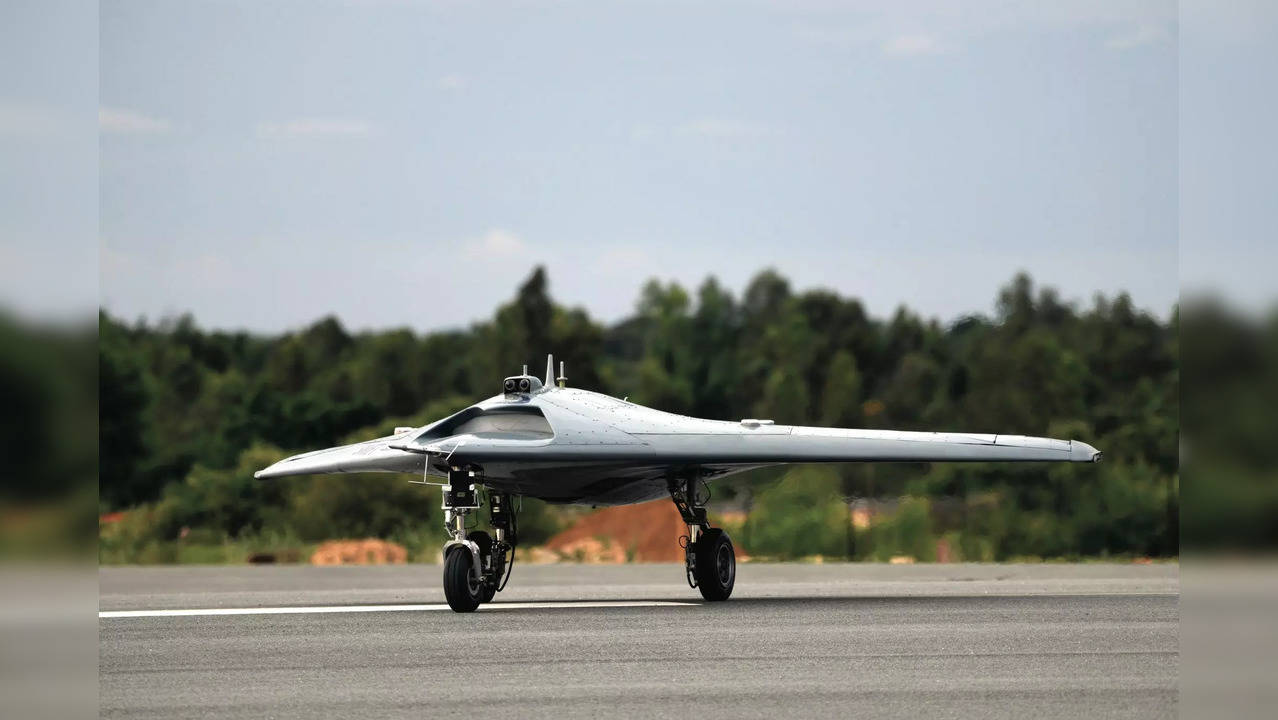DRDO takes major step towards developing unmanned combat aerial vehicles: Explained
DRDO successfully flight tested a scaled-down version of what will be India’s first stealth combat aerial vehicle – the Ghatak drone. This is a milestone for India’s indigenous defence programme.

The technology that was tested on Friday is a prototype of the upcoming Ghatak combat drone, which is being developed by the DRDO’s Aeronautical Development Establishment (ADE). This flight test was of a scaled-down prototype while a full-scale prototype is expected by 2024-25.
India has moved a step closer to making its own combat drones for the armed forces after the Defence Research and Development Organisation (DRDO) successfully tested the Autonomous Flying Wing Technology Demonstrator at the Aeronautical test range in Karnataka’s Chitradurga. This is a significant milestone because it not only boosts India’s technological prowess but adds to critical firepower that is necessary in modern warfare.
The war in Ukraine has emphasised the role of unmanned combat air vehicles (UCAV) and aircrafts in a conflict situation.
The technology that was tested on Friday is a prototype of the upcoming Ghatak combat drone, which is being developed by the DRDO’s Aeronautical Development Establishment (ADE). This flight test was of a scaled-down prototype while a full-scale prototype is expected by 2024-25.
The aircraft is also referred to as the Stealth Wing Flying Testbed, or SWiFT. The July flight test analysed the UACV’s ability to take off, climb in altitude, cruise midair, navigate to waypoints, descend and land autonomously. The SWiFT UCAV at this stage of development is being tested to prove the stealth technology and high-speed landing technology in autonomous mode.
Last year, the platform had completed taxi trials in September.
Subsequent to the flight test, the ADE will study the data minutely to fine tune future prototypes and improve performance. Researchers are going to look at performance of the autonomous take-off and landing technology, retractable landing gear system and the aircraft’s radar signature.
This will inform modifications and the aircraft will go through at least 10 more iterations before the final version is ready, say aviation experts.
Once the capability of the SWiFT platform is above question, only then will the government grant funding for the full-fledged development of the Ghatak UCAVs.
SwiFT is the acronym for Stealth Wing Flying Testbed. This is a technology demonstrator, and as the name suggests it is intended to develop technologies for the final Ghatak UCAV which is an autonomous stealth UCAV, being developed primarily as a stealth bomber under what is touted to be India’s highly secretive unmanned combat aerial vehicle programme.
SWiFT is roughly 13 feet long, with a wingspan of over 16 feet. It is thought to weigh approximately 2,300 pounds.
SWiFT is powered by an NPO Saturn 36MT turbofan engine, which is manufactured by NPO Saturn Russia, for powering advanced trainers, light attack aircraft and unmanned aerial vehicles (UAV). Reports say that it will be later replaced by Gas Turbine Research Establishment’s (GTRE) Small Turbo Fan Engine (STFE).
SwiFT incorporates the “flying wing” design as do most stealth aircraft. It is tailless and has fixed-wings with no fuselage and steers its path by balancing its airflow and centre of gravity, eliminating the need for a tail. Its payload, fuel, and equipment are housed inside the main wing structure. Scientists say that this design ensures optimum fuel use and stability for the aircraft.
The final UCAV will be capable of launching missiles and precision-guided munitions. ADE is reportedly also designing a deck variant for the Indian Navy.
DRDO said in a press release: “Operating in a fully autonomous mode, the aircraft exhibited a perfect flight, including take-off, way point navigation and a smooth touchdown. The aircraft is powered by a small turbofan engine. The airframe, undercarriage and entire flight control and avionics systems used for the aircraft were developed indigenously.”
Trending:
End of Article
Subscribe to our daily Newsletter!





Related News





Tech Layoffs 2024: Experts Explain Why The Tech Industry Is Most Affected

Who Built NASA's James Webb Space Telescope?

Explained: What Is 60% Kannada Rule That Saw Violent Protests In Bengaluru

Disease X Versus COVID-19: What Are Similarities And Difference Between Two

Are We Prepared to Deal with Disease X?









